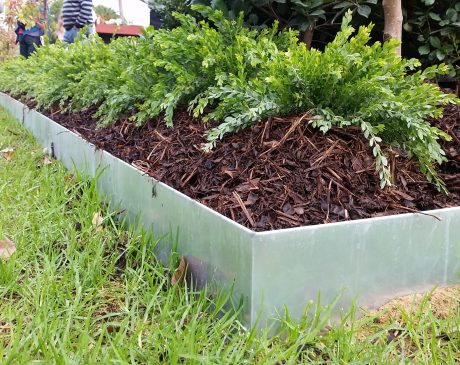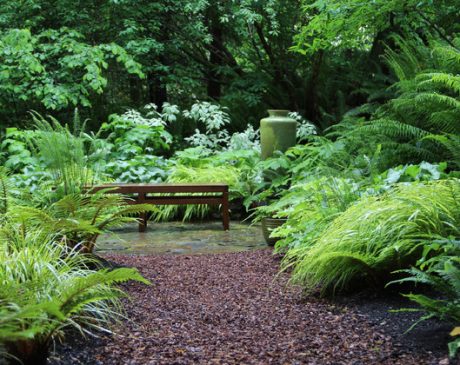How to Grow and Care for Tree Peonies

Is Peony your favorite flower, or do you wish to see them bloom in your garden someday? You need to know a little bit about them and more about their planting and caring process.
Peonies are herbaceous perennial plants that produce large, showy, and fragrant flowers. They are native to Asia, Europe, and North America.
Speaking of peony trees, they go with a scientific name called Paeonia suffruticosa. And Tree Peonies are a particular type of peony that differs from the more common herbaceous peonies.
Unlike herbaceous peonies that die back to the ground in winter, tree peonies have woody stems and retain their structure throughout the year. They can grow into small shrubs or even small trees, reaching heights up to 6 feet or more.
Now let’s dive into the specifics of growing and caring for the tree peonies in detail.
Site Selection
Well, first things first, site selection plays a major role in growing your Tree Peonies.
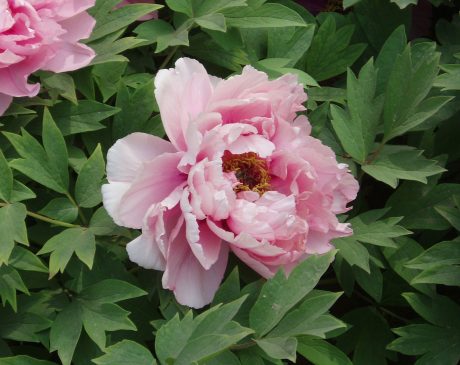
The following are a few considerations for growing your Tree Peonies.
1. Sunlight
Peony trees prefer full sun to partial shade for optimal growing conditions. Peony trees require at least 6 hours of sunlight for heir flowering conditions.
In regions with hot summers, providing some afternoon shade can help protect the plants from excessive heat stress. Too much shade can lead to reduced flowering and weaker growth.
Finding places with the right balance of sunlight and shade is essential for your Tree Peonies.
2. Soil
The soil quality is crucial for the health and growth of tree peonies. They prefer well-draining soil that allows excess water to pass through easily. Peonies do not like to sit in water-logged soil, as it can lead to root rot and other root-related diseases.
To prepare the soil for planting tree peonies, you can take the following steps:
Soil Texture: Choose soil that is well-draining. Loamy soil is a balanced mixture of sand, salt, and clay, which provides good aeration and water drainage.
Organic Matter: Incorporate plenty of organic matter into the soil, such as well-rotted compost or aged manure. Organic matter helps improve soil structure, fertility, and moisture retention.
3. pH Level
The pH level of the soil is another critical factor. Peonies prefer slightly acidic to neutral soil with a pH between 6.0 and 7.0. You can test the pH of your soil using a soil testing kit available at garden centers or through a soil testing service. If the pH is too acidic (below 6.0), you can add lime to raise it. On the contrary, if the soil is alkaline (above 7.0), you can amend it with sulfur or other acidifying agents.
Garden Layout for Peonies
When planting your garden layout for tree peonies, keep in mind their mature size and space them accordingly. Give them enough room to grow and spread without crowding neighboring plants. Consider planting them as a focal point or in the back of a mixed perennial border to showcase their stunning blooms.
When to Plant
Tree peonies are typically best planted in fall or early spring when the soil is workable. The exact timing depends on your climate and the availability of healthy plants.
- Tips for Spring Planting- If planting in spring, do it as soon as the ground can be worked, and try to do it before new growth begins. This will give the peony time to establish its roots before the hot summer months.
- Tips for Summer Planting- Summer planting can be more challenging, as the heat can stress the newly planted peonies. If planting in summer, make sure to water them adequately and provide some shade during the hottest part of the day.
- Tips for Winter Planting- Planting in the fall, just before the first frost, is often recommended. This allows the peony to establish its root system during the winter months, leading to better growth and flowering in the following seasons.
Planting Tree Peonies
Let’s begin with planting Tree Peonies.
1. Prepare the Soil
- Choose the planting location that meets the site selection criteria discussed earlier (full sun to partial shade, well-draining soil, and slightly acidic to neutral pH).
- Dig a hole about 2 feet wide and 2 feet deep. The size of the hole allows ample space for the peony’s roots to spread and establish.
- Mix in some well-rotted compost or aged mature manure with the soil you removed from the hole. This organic matter will enrich the soil and provide essential nutrients for the peony’s growth.

2. Planting the Tree Peony
- Before planting, inspect the peony’s roots. Look for the eyes, which are the small reddish buds on the roots. These eyes will eventually grow into new shoots and stems.
- Place the tree peony in the center of the prepared hole, ensuring the eyes are facing upwards.
- Position the peony so that the top of the root ball is about 2 inches below the soil surface. Planting too deep or shallow can affect the peony’s growth.
- Backfill the hole with the amended soil, gently firming it around the plant to eliminate air pockets.
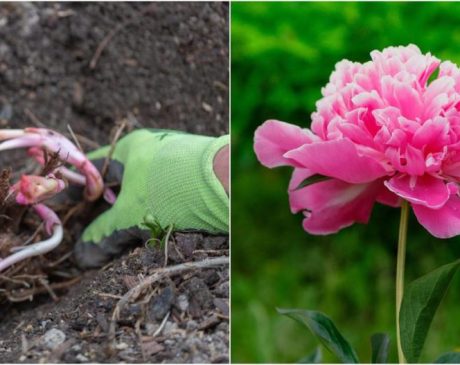
3. Watering
- After planting, water the peony thoroughly to settle the soil around the roots. Adequate watering at this stage is essential to help the plant establish itself.
- Throughout the growing season, ensure the peony receives regular watering, especially during dry periods.
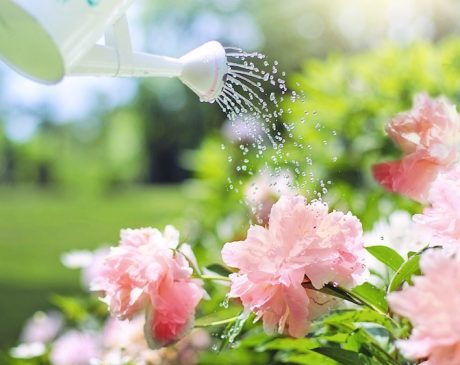
4. Mulching
- Apply a layer of mulch, such as wood chips or shredded bark, around the base of the plant. Mulch helps retain soil moisture, suppresses weeds, and regulates soil temperature.
- Keep the mulch away from directly touching the peony stems to prevent moisture-related issues.
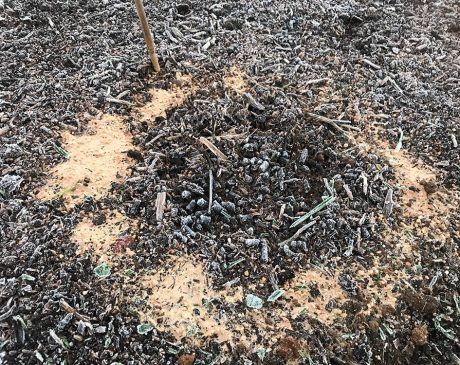
Growth Expectations
Tree peonies generally take a few years to become fully established and reach their maximum size and bloom potential. In the initial year or two, you may see limited or no flowering as the plant focuses on establishing its root system.
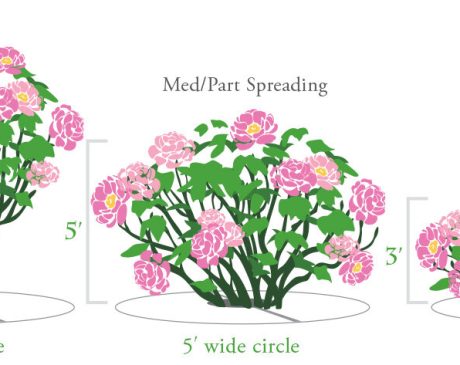
Once established, tree peonies can produce breathtaking, large flowers each spring. The exact timing of flowering may vary depending on the variety and growing conditions.
Tree Peonies Care and Maintenance
With proper care and favorable conditions, tree peonies can live for decades, providing years of stunning floral displays. Let’s focus on the basic care for tree peonies.
1. Watering

Provide regular watering to tree peonies, particularly during dry periods. Keeping the soil consistently most (but not waterlogged) during the summer can help prevent stress and promote better flowering in the following spring.
2. Fertilization
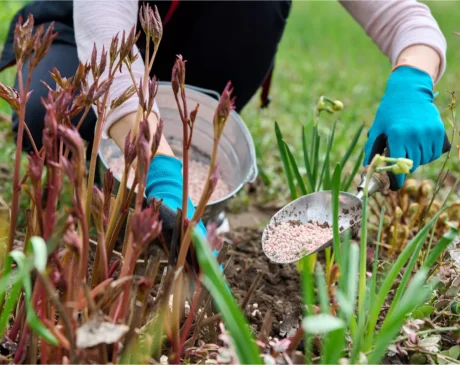
Apply a balanced fertilizer in the spring when new growth begins. Follow the manufacturer’s instructions for application rates and methods. You need to be aware of both over-fertilizing and under-fertilizing.
Over-fertilizing: It can cause an imbalance in nutrient levels. When tree peonies receive too much nitrogen from fertilizers, it puts more energy into leafy growth and less into flower bud development. As a result, you may end up with lush foliage but fewer or smaller blossoms.
Underfertlizing: On the other hand, underfertlizing means the plant is not receiving enough nutrients to support healthy growth and flowering. In such cases, the plant may appear stunted, and the number and size of blooms may be reduced.
3. Pruning
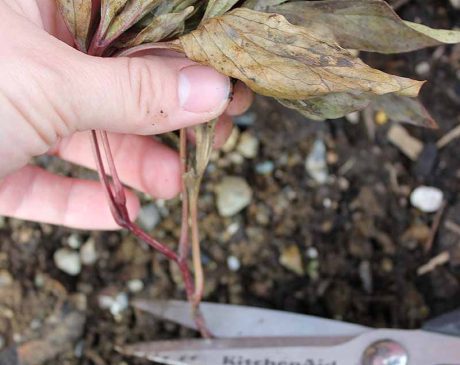
Tree peonies generally require minimal pruning. In late winter or early spring, remove any dead or diseased wood to promote healthy growth and prevent the spread of diseases.
4. Support
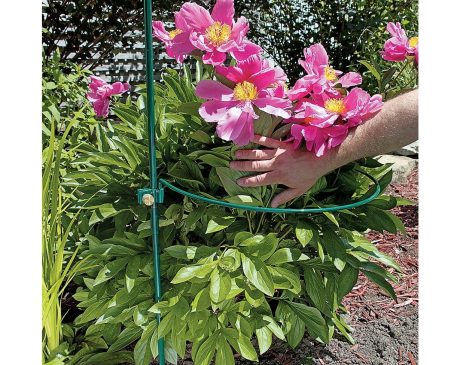
Tree peonies vary in size. Some tree peony varieties produce large and heavy flowers that may need support to prevent dropping. You can use stakes or supports to prop up the flowers and prevent them from touching the ground.
5. Winter Protection
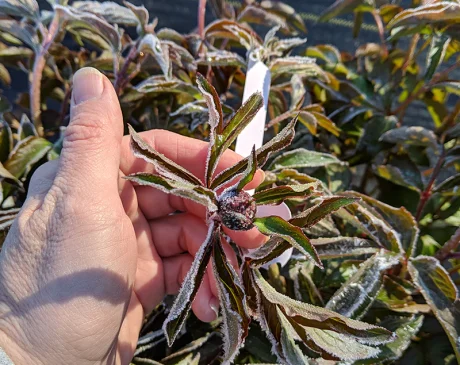
In colder climates, apply a thick layer of mulch around the base of the plant in late fall to protect the roots from freezing temperature. This mulch layer also helps insulate the soil during winter.
6. Pest and Disease Management

Regularly inspect your peony tree for signs of pests or diseases, such as aphids, mites, or botrytis blight. Good garden hygiene, such as removing fallen leaves and debris from around the plants, can help prevent fungal diseases. If you notice any issues, take appropriate measures to address them promptly, such as using insecticidal soap or fungicides.
7. Deheading
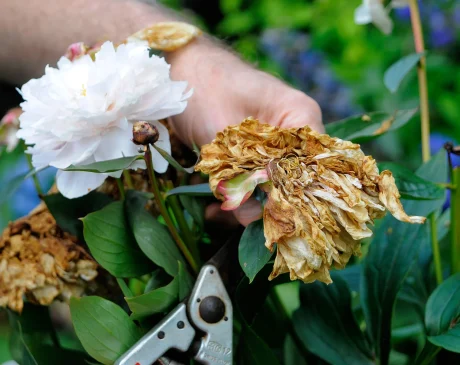
Deadheading is removing spent or faded flowers from the plant. This practice not only improves the plant’s appearance but also directs its energy towards producing more flowers instead of setting seeds. After the tree peony has finished flowering for the season, simply snip off the faded blooms at their base.
8. Mulch Removal
As much as mulching is a must when your plant tree peonies, its removal comes at a greater advantage. Over time, mulch can break down and decompose. It’s a good idea to renew the mulch layer around your tree peonies each year or as needed. This helps to maintain its effectiveness in retaining soil moisture and regulating temperature while also preventing weed growth.
During spring, once the worst of the cold weather has passed, you can gently remove the winter mulch from around the base of the plant. This allows the soil to warm up and the plant to emerge from dormancy. Be careful not to damage any emerging shoots during this process.
Conclusion
Gardening and tending to peony trees can be a fulfilling and rewarding journey for any gardening enthusiast. By understanding the critical elements of site selection, planting, and maintenance, you can create an environment where these stunning blooms thrive and enchant your garden year after year.
While tree peonies may take some time to reach their full potential, the anticipation of breathtaking blooms makes the journey worthwhile. Once they are established, the beauty of these flowers in full bloom will surely leave you captivated.
In your garden, tree peonies will stand as graceful and timeless beauties, adding elegance and charm to your landscape. With their remarkable flowers and enchanting fragrance, they are sure to become a cherished focal point, attracting admiration all around.



